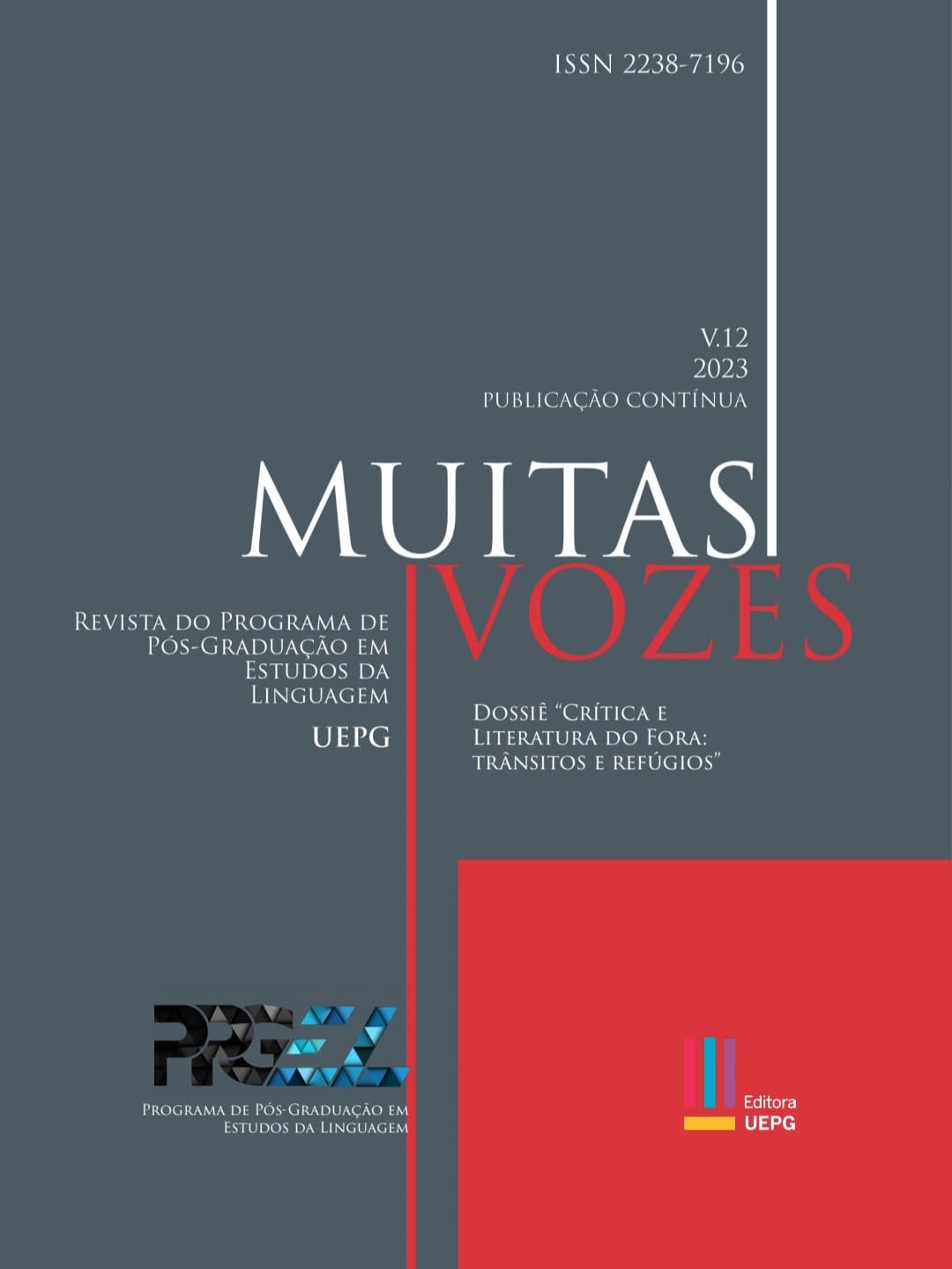A MEMÓRIA E O TEMPO HISTÓRICO EM FACE À DITADURA MILITAR NO CONTEXTO DAS UNIVERSIDADES EM O LUGAR MAIS SOMBRIO, DE MILTON HATOUM
Abstract
In the trilogy, The most sombre place, Hatoum innovates his narrative technique, when working with multiple spatio-temporal planes, where, above all, the voice of the character Martim extends, who, as he composes a historical-memorial archive, draws the sociopolitical scenario of one of the most troubled and oppressive periods in recent Brazilian history. In this, the present article intends, based on her elaborations, analysismeneutics of Ricoeur, as witnesses between historical and written testimony, which configure, through the bias of the narrative, an archival. We will also make use of the research by Motta (2014), on the context of universities in the military dictatorship, to interpret the artistic-cultural and intellectual actions developed by the young people with whom Martim has a relationship at two important universities, UnB and USP.
Downloads
Downloads
Published
How to Cite
Issue
Section
License
Copyright (c) 2024 Muitas Vozes

This work is licensed under a Creative Commons Attribution 4.0 International License.

Este obra está licenciado com uma Licença Creative Commons Atribuição 4.0 Internacional.
Transferência de direitos autorais: Caso o artigo submetido seja aprovado para publicação, JÁ FICA ACORDADO QUE o autor AUTORIZA a UEPG a reproduzi-lo e publicá-lo na REVISTA MUITAS VOZES, entendendo-se os termos "reprodução" e "publicação" conforme definição respectivamente dos incisos VI e I do artigo 5° da Lei 9610/98. O ARTIGO poderá ser acessado tanto pela rede mundial de computadores (WWW - Internet), como pela versão impressa, sendo permitidas, A TÍTULO GRATUITO, a consulta e a reprodução de exemplar do ARTIGO para uso próprio de quem a consulta. ESSA autorização de publicação não tem limitação de tempo, FICANDO A UEPG responsável pela manutenção da identificação DO AUTOR do ARTIGO.



